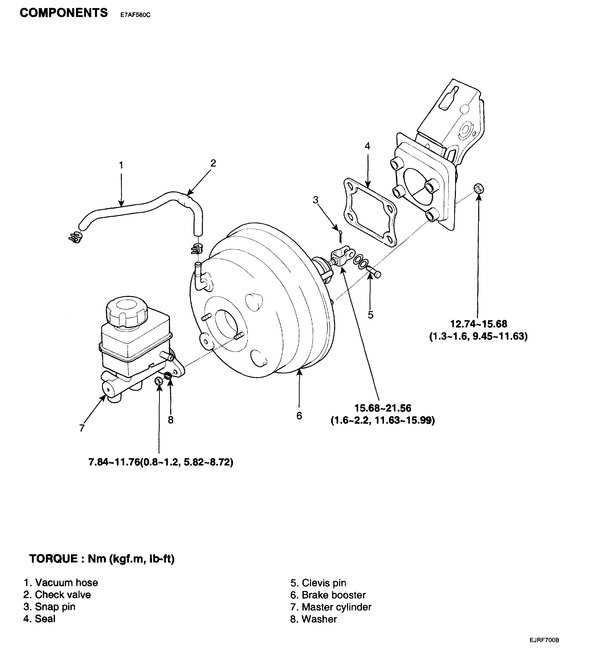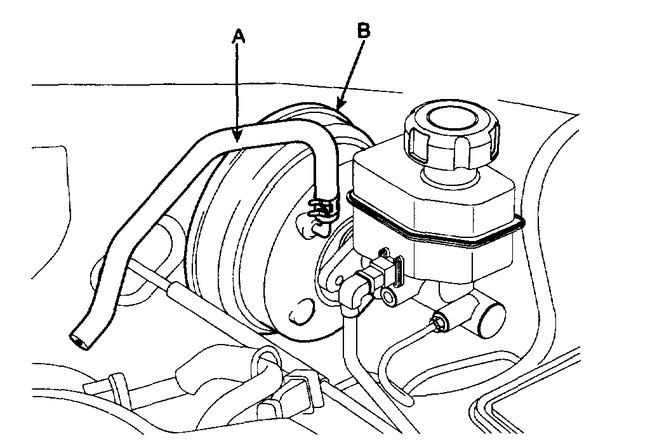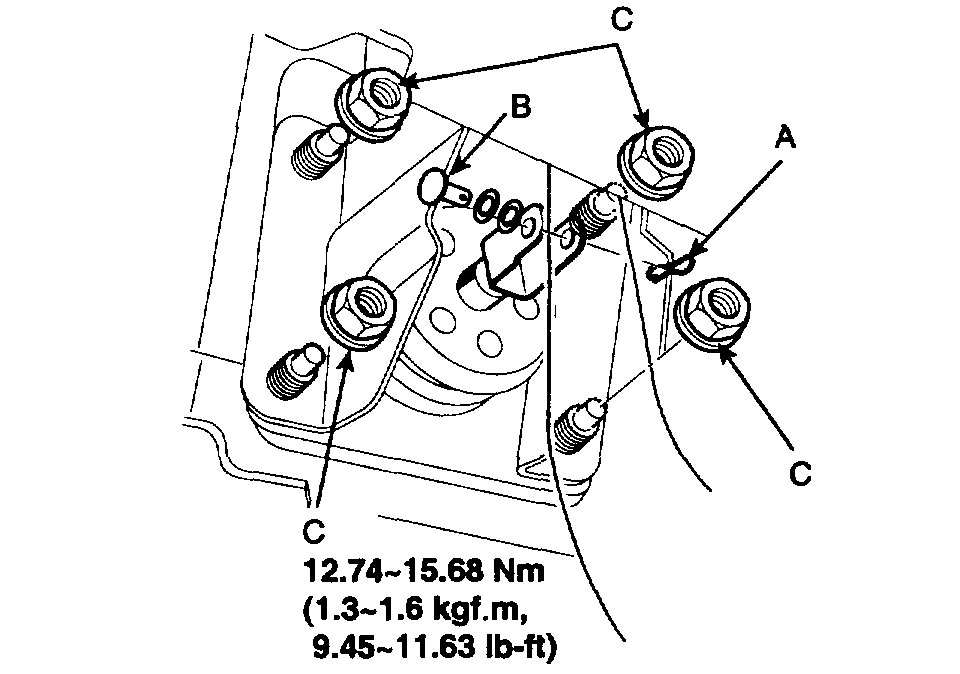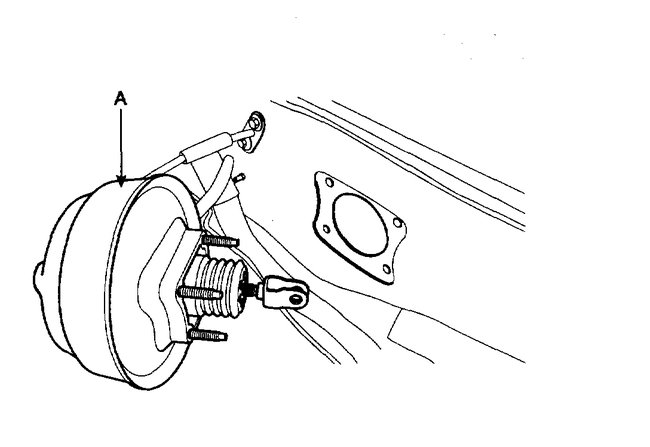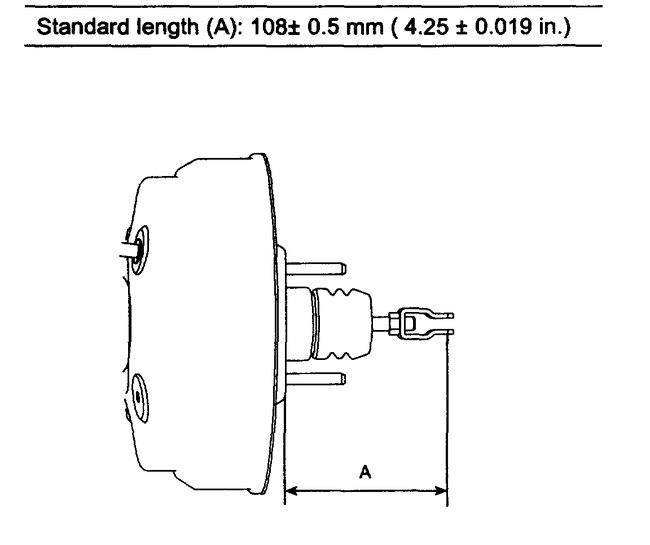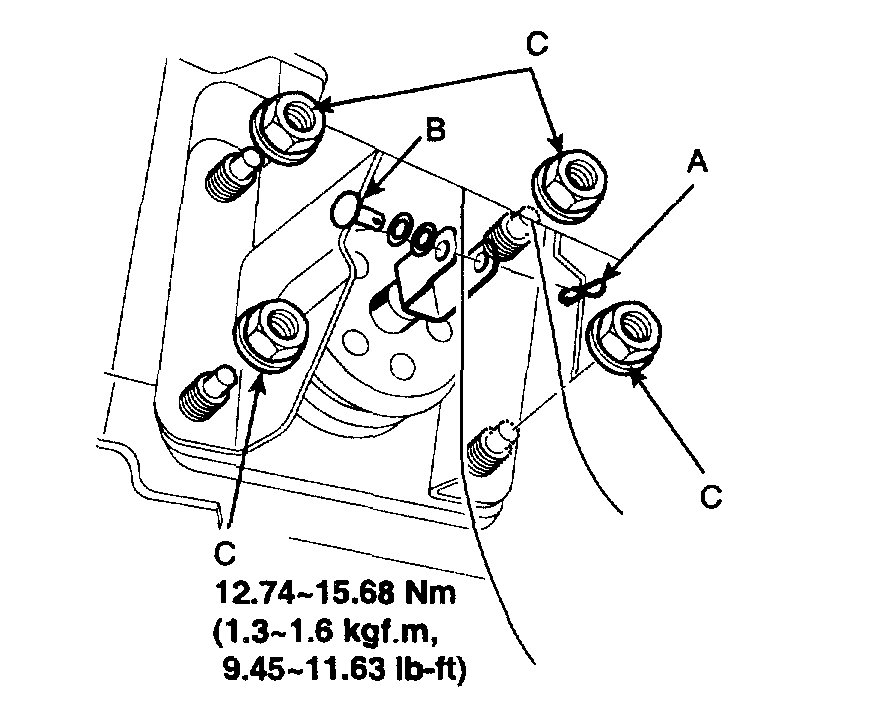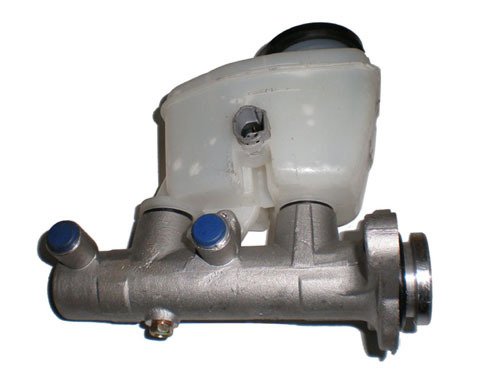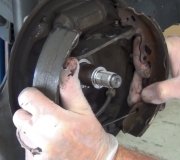Hi,
Replacing the vacuum brake booster isn't too hard. The most difficult is getting under the dash to unbolt it. There isn't a lot of room.
Regardless, here are the directions for replacement. The attached pictures correlate with the directions.
________________________________________________
2007 Hyundai Sonata
Procedures
Vehicle Brakes and Traction Control Power Brake Assist Vacuum Brake Booster Service and Repair Procedures
PROCEDURES
BRAKE BOOSTER
COMPONENTS
pic 1
REMOVAL
1. Remove the master cylinder.
Pic 2
2. Disconnect the vacuum hose (A) from the brake booster (B).
Pic 3
3. Remove the snap pin (A) and clevis pin (B).
4. Remove the four booster mounting nuts (c).
Pic 4
5. Remove the brake booster (A).
INSTALLATION
pic 5
1. Adjust push rod length of the booster, and then install the seal on the booster assembly.
Standard length (A): 108± 0.5 mm (4.25 ± 0.019 inch)
pic 6
2. Insert the booster and tighten the nuts (c).
3. Connect the booster push rod and brake pedal with a pin (B) and install a snap clevis pin (A) to the clevis pin (B).
CAUTION: Grease the pin before installing the snap pin. Always use a new snap pin.
4. Install the master cylinder.
5. Connect the vacuum hose to the brake booster.
6. After filling the brake reservoir with brake fluid, bleed the system.
7. Check for fluid leakage.
8. Check and adjust the brake pedal for proper operation.
___________________________
I hope this helps. Let me know if you have other questions.
Take care and God Bless,
Joe
Images (Click to make bigger)
Monday, March 15th, 2021 AT 7:25 PM
